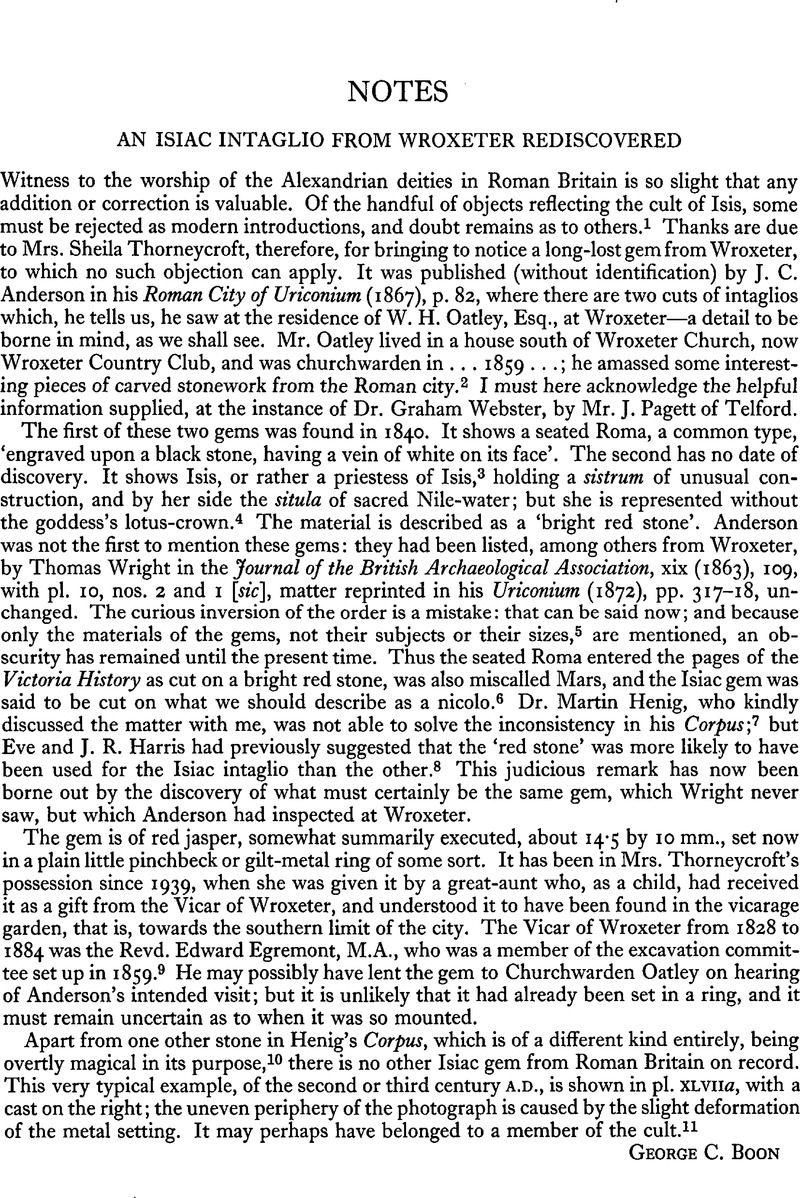No CrossRef data available.
Published online by Cambridge University Press: 29 November 2011

12 This tentative identification has not been confirmed.
13 Almost every known carved stone of Saxon date was studied by Collingwood, W. G. in four articles in the Yorkshire Archaeological Journal between 1907 and 1915.Google Scholar
14 Peers, C.and Radford, C. A.Ralegh, ‘The Saxon monastery of Whitby’. Archaeologia, lxxxix (1943), 27–88.CrossRefGoogle Scholar
15 Ibid., 50–2, and pl. xxvia, b.
16 Watkin, J. and Mann, F., ‘Some Late Saxon finds from Lilla Howe, N. Yorks., and their context’, Medieval Archaeology, xxv (1981), 153–7.Google Scholar
17 Peers and Ralegh Radford, op. cit. (note 14), no. 35.
18 Nos. 36, 37, 38 and 42.
19 No. 39.
20 Nos. 38, 40, 41, 43 and 44.
21 Wilson, D. M., Anglo-Saxon Ornamental Metalwork, 700–1100 (London, 1964), no. 152.Google Scholar It is interesting to note that this was originally in the collection of Sir William Strickland of Whitby, although there is no proof that it was a local find.
22 Wilson, D. M. and Blunt, C. E., ‘The Trewhiddle hoard’, Archaeologia, xcviii (1961), 75–122.CrossRefGoogle Scholar
23 Hinton, D. A., A Catalogue of Anglo-Saxon Ornamental Metalwork 700–1100 in the Ashmolean Museum (Oxford, 1974), pp. 1–7.Google Scholar
24 Wilson and Blunt, op. cit., p p. 106–8.
25 Bede, Historia Ecclesiastica, book iv, chap. 23.